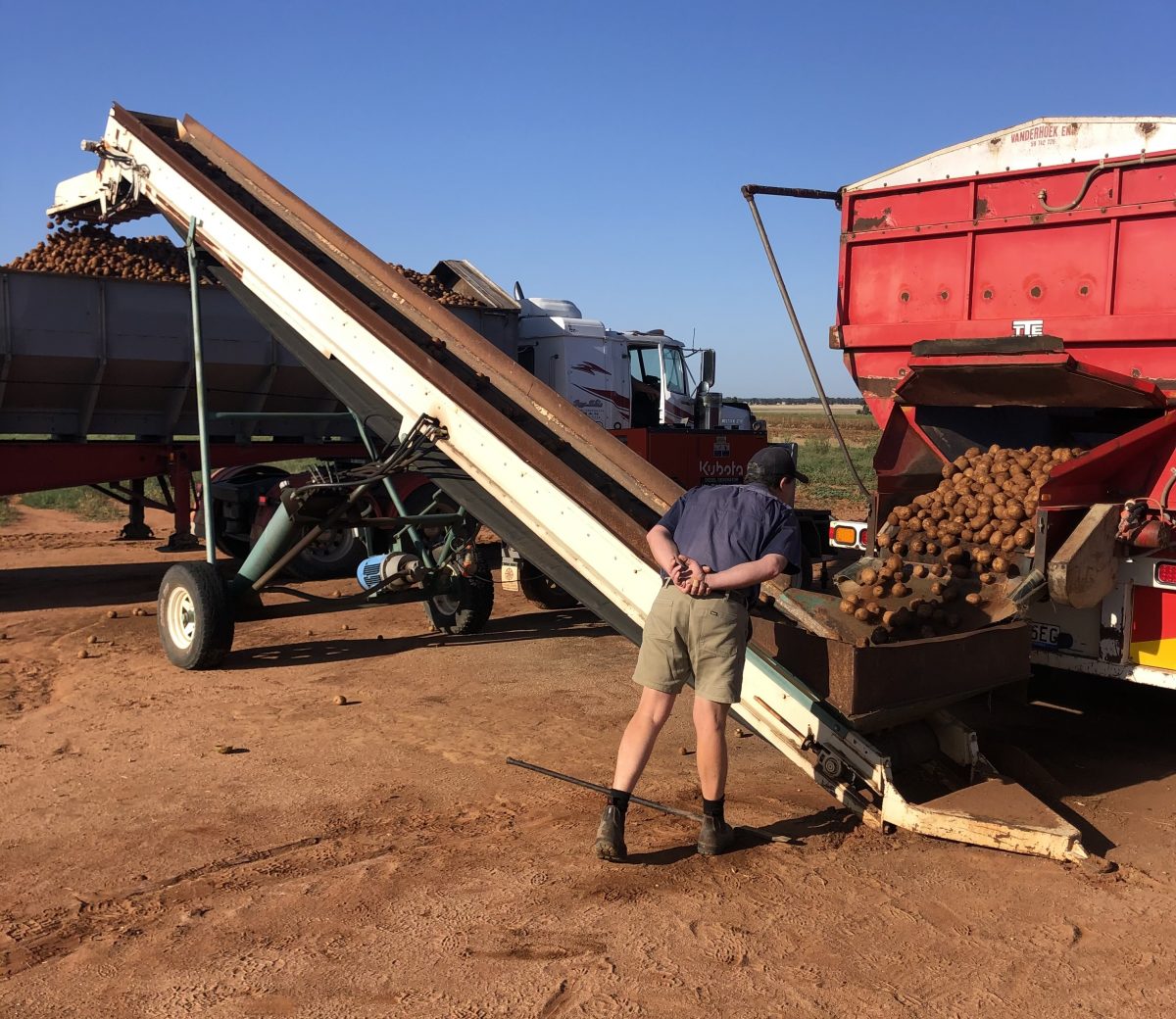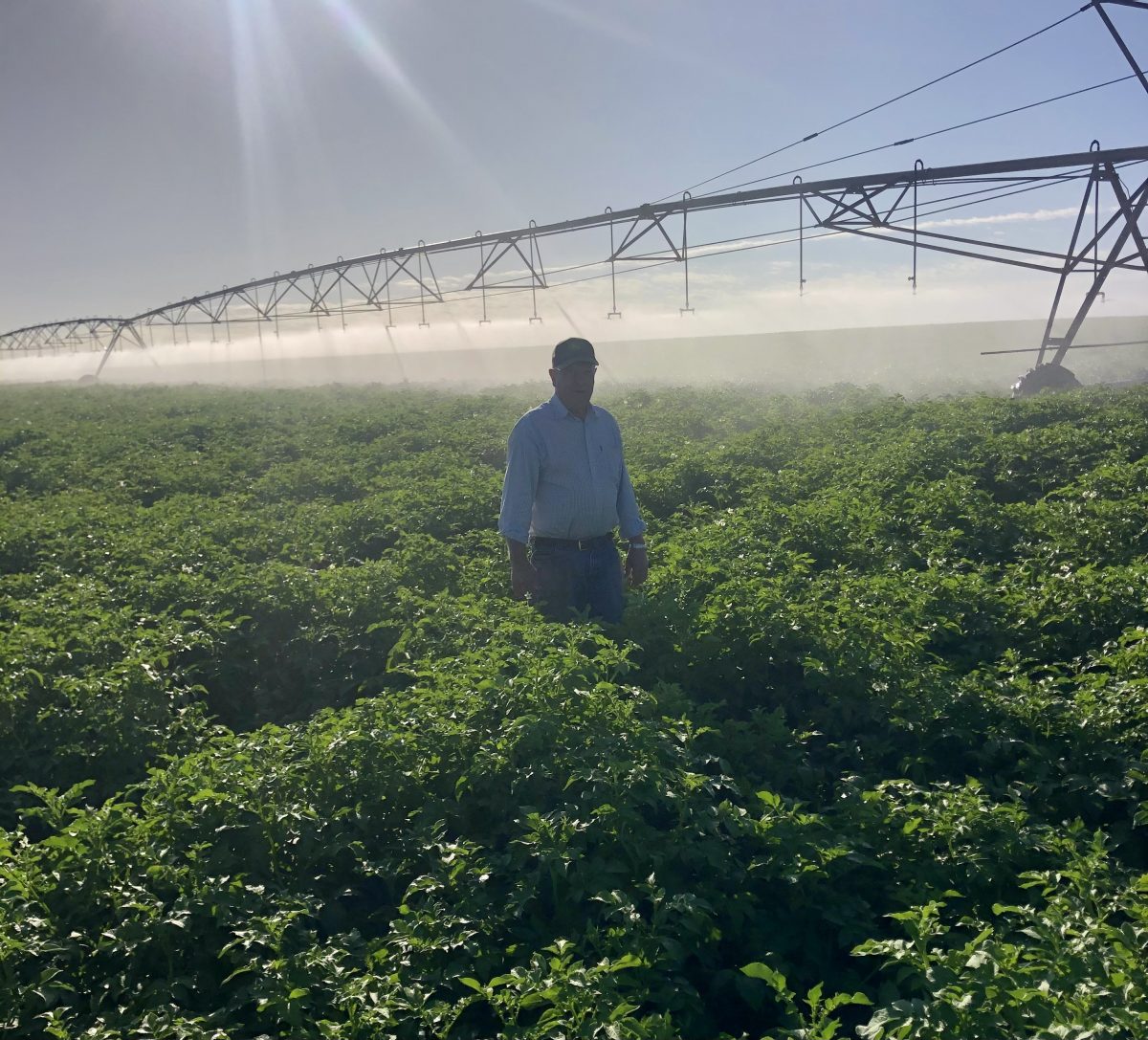
After a slow start to the season, potato crop harvesting has begun on Geoff Moar’s farm in the Riverina. Photo: Supplied.
Wet weather can wreak havoc on any crop – and the humble potato is no exception.
Throughout the Christmas season fish and chip shops have had to inform hungry customers they couldn’t have fries with that, while Coles recently introduced a purchase limit on some goods.
“Poor weather in the eastern states has affected supply of some frozen potato products across the industry,” a spokesperson said.
“We thank customers for their patience while we work hard with suppliers to minimise disruption and return stock to normal levels in the coming months.”
While it hasn’t implemented buying limits on potato products, Woolworths also said it was experiencing some pressure in terms of pricing and availability.
“Floods and poor growing conditions across the eastern seaboard resulted in a less than ideal harvest of potatoes, particularly those used to make packet chips or crisps,” a spokesperson said.
“Poor growing conditions in Tasmania have also put pressure on the supply of frozen chips [from] the Apple Isle.”
Potato processor McCain said this “challenging period” had also coincided with an increase in demand for their products.
However potato suppliers have sent their assurances things are about to look up.
The Riverina is one of the main potato growing districts in NSW.
Geoff Moar is a potato farmer in the southern Riverina town of Oaklands, who grows varieties for the french fries and crisping market and supplies product to Smiths.
He said flooding rains throughout spring were definitely to blame for the chip shortage, as it delayed planting for a lot of farmers.
“We would like to be planting in September and October, but if you go back to early September, that’s when things really started to get wet,” Geoff said.
“One week we’d have 80 millimetres of rain, and then five to six days later, when you thought you were good, you’d have 60 millimetres that week, it just kept going, so we couldn’t plant on time.
“Everybody has been delayed with the extreme wet.”

Geoff Moar among his potato crops in Oaklands. Photo: Supplied.
Despite some people’s concept that potatoes are a cheap and easy vegetable to grow, it depends on the variety.
“The seed is worth so much money and you use 1.3 tonne of seed per acre,” Geoff said.
“So you’ve got to be very careful when you make the commitment to plant that it will be successful.”
If the potatoes were planted on time they would have been harvested at the beginning of January, with some even being pulled from the ground in December.
However Geoff only started harvesting in the third week of January.
The wet weather and rising cost of living have also forced some growers out of the industry altogether.
“I know some growers up north decided not to grow at all this season,” Geoff said.
“The high cost of fertiliser, fuel and minimal availability of labour has a lot of people considering what their future is.”
But Geoff felt they weren’t the only issues which had led to the shortage.
He also pointed to the big supermarket chains, which had preferred suppliers they received product from.
This meant when shortages came about because of issues such as the weather, the supermarkets then had less places to source produce from.
“They’re relying on far few people to supply them … the industry became dominated by supermarkets demanding you grow a variety to create a closed loop market to eliminate competition, and now that’s coming back to haunt them,” Geoff said.
“It became simpler to get contracts with processors [instead of supermarkets], as you can’t grow a crop when you haven’t got somewhere to send it.”
However with harvesting now underway, Geoff said things should start to even out by the middle of February.
“The processing market will come back, the growers up and down the east coast will be supplying to the process market and that will increase over the next few weeks,” he said.
“Give it a few weeks, the supply will even out.”







